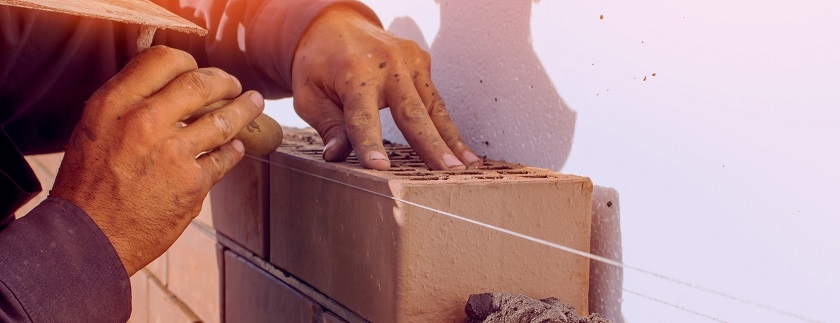Bricklaying is an essential skill for a practised DIYer, and something that when done correctly, can bring a lot of satisfaction. It’s important to get the mortar mix correct, to choose the right bricks or slabs and to perfect your bricklaying technique. It’s also important to use the correct tools. Here is a guide to bricklaying tools to get the job done perfectly.
In general bricklaying tools can be categorised into four groups: trowels, string lines, joint tools and hammers. Each has an important role to play.
Trowels
Trowels are the most important bricklaying tool. Bricklayers use trowels for handling and shaping mortar and laying it between courses of bricks. Professional use trowels of different types and shapes for specific bricklaying tasks, but a brick trowel is probably most essential. Traditional handles are made of hardwood, although modern trowel designs have softer grips designed for greater comfort and east of use. The blade of a trowel is made from steel – hardened and tempered carbon steel is commonly used.
- Brick Trowel
Used to pick up and spread mortar, brick trowels are the largest of the trowel family. The two long edges of the trowel can either be dead straight or have a slight curve, known as a Philadelphia pattern.
- Gauging trowel
A gauging trowel is smaller than a brick trowel. They have a distinctive rounded nose that is ideal for finishing large points and general patching of mortar.
- Pointing Trowel
The pointing trowel is the smallest trowel a bricklayer will use. It is designed for pointing work.
Masonry Hammers
A building job may require a certain amount of shaping of bricks and masonry, and some jobs require masonry to be knocked into position. As most bricks are lightweight, a trowel is fine to use to tap them in place. Other types of masonry will require a much heavier mallet.
- Rubber mallet
Use a rubber mallet to knock bricks, slabs or other heavy masonry materials into place. The rubber head will cause little or no damage to the surface even when a heavy impact Is required.
- Brick hammer
A brick hammer is specifically designed for dressing bricks and masonry. Use the chisel-shaped peen opposite the square driving face to chip away sections of masonry.
- Scutch hammer
Scutch hammers are used for cutting bricks. They have a narrow end for striking the brick and a hammer end for applying force. The narrow end can be used in conjunction with brick combs to remove mortar or to make a surface rough for applying new mortar.
Joint tools
Joints are key components of masonry work. Not only are they integral to a wall’s structure, but they also form part of the design, particularly in the case of brickwork. Usually a jointer is used only for new pointing. A raker is used for removing old mortar or producing patterned joints.
- Brick jointer
Brick jointers are used for finishing brick joints. Double-ended brick joints are used when you have two different joint depths.
- Mortar Rakes
Before repointing takes place, use a mortar rake or joint raker to scrape out old mortar from the joints
String Lines
A string line is an essential bricklaying tool, enabling bricks to be laid level and straight. Usually they are held in place with line pins or blocks.
The flat blade of the pins is inserted into the drying mortar at opposite ends of the wall. Polyethylene string (usually bright coloured) is then tied between the pins to form a guideline. (String normally made from nylon).
Other Useful Equipment
If carrying out bricklaying, you will need to have the appropriate safety gear such as gloves, eye protection and dust masks. You may also find brick tongs makes the job of carrying bricks a lot faster and easier. Measuring tapes are also essential, and a tarpaulin is great to keep workspaces tidy and to cover up the project if it rains.



